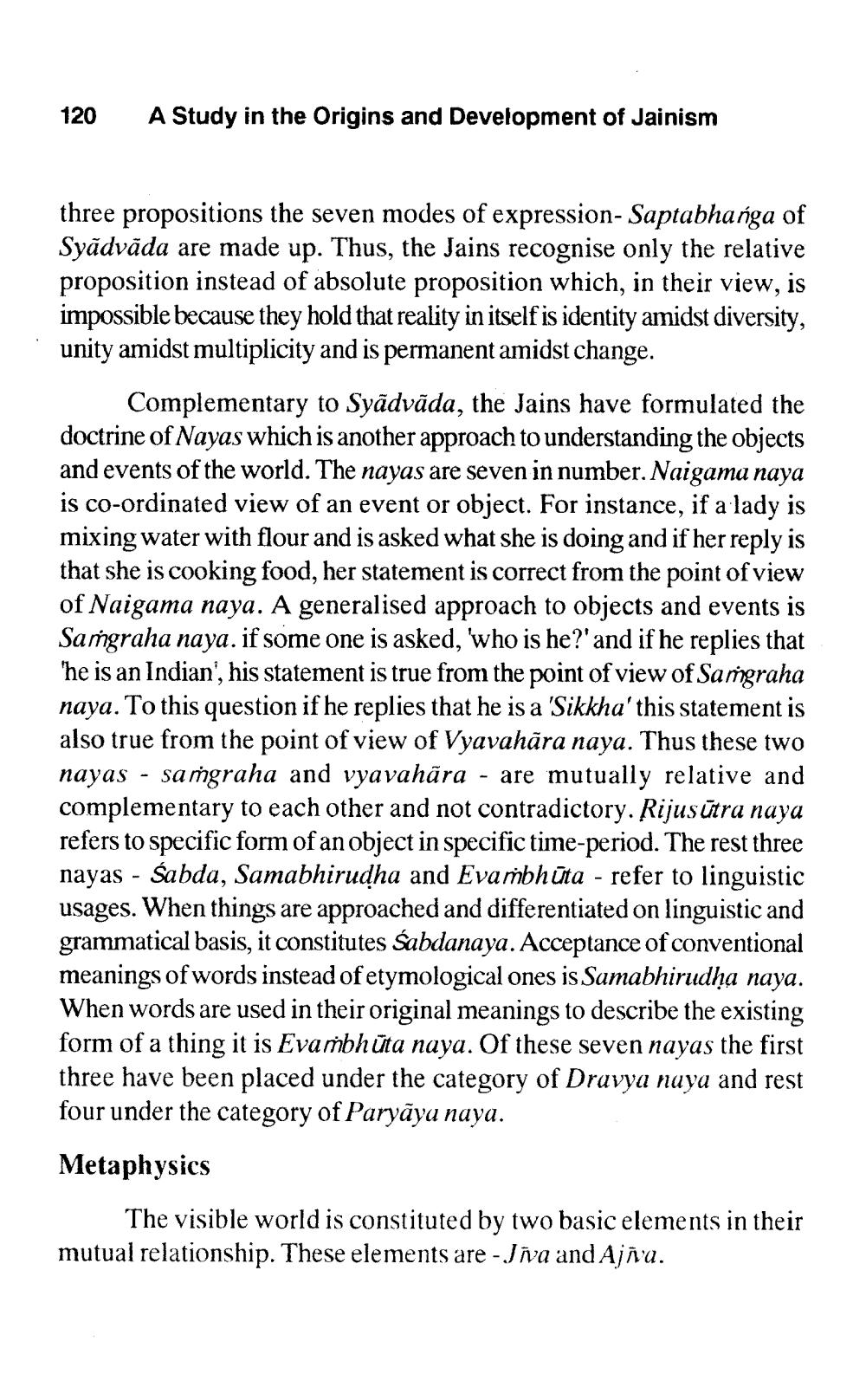________________
120
A Study in the Origins and Development of Jainism
three propositions the seven modes of expression- Saptabhanga of Syadvāda are made up. Thus, the Jains recognise only the relative proposition instead of absolute proposition which, in their view, is impossible because they hold that reality in itself is identity amidst diversity, unity amidst multiplicity and is permanent amidst change.
Complementary to Syadvāda, the Jains have formulated the doctrine of Nayas which is another approach to understanding the objects and events of the world. The nayas are seven in number. Naigama naya is co-ordinated view of an event or object. For instance, if a lady is mixing water with flour and is asked what she is doing and if her reply is that she is cooking food, her statement is correct from the point of view of Naigama naya. A generalised approach to objects and events is Samgraha naya. if some one is asked, 'who is he?' and if he replies that 'he is an Indian', his statement is true from the point of view of Samgraha naya. To this question if he replies that he is a 'Sikkha' this statement is also true from the point of view of Vyavahāra naya. Thus these two nayas - saṁgraha and vyavahāra are mutually relative and complementary to each other and not contradictory. Rijusūtra naya refers to specific form of an object in specific time-period. The rest three nayas - Śabda, Samabhiruḍha and Evambhūta - refer to linguistic usages. When things are approached and differentiated on linguistic and grammatical basis, it constitutes Sabdanaya. Acceptance of conventional meanings of words instead of etymological ones is Samabhirudha naya. When words are used in their original meanings to describe the existing form of a thing it is Evambhuta naya. Of these seven nayas the first three have been placed under the category of Dravya naya and rest four under the category of Paryaya naya.
Metaphysics
The visible world is constituted by two basic elements in their mutual relationship. These elements are - Jīva and Ajīva.




